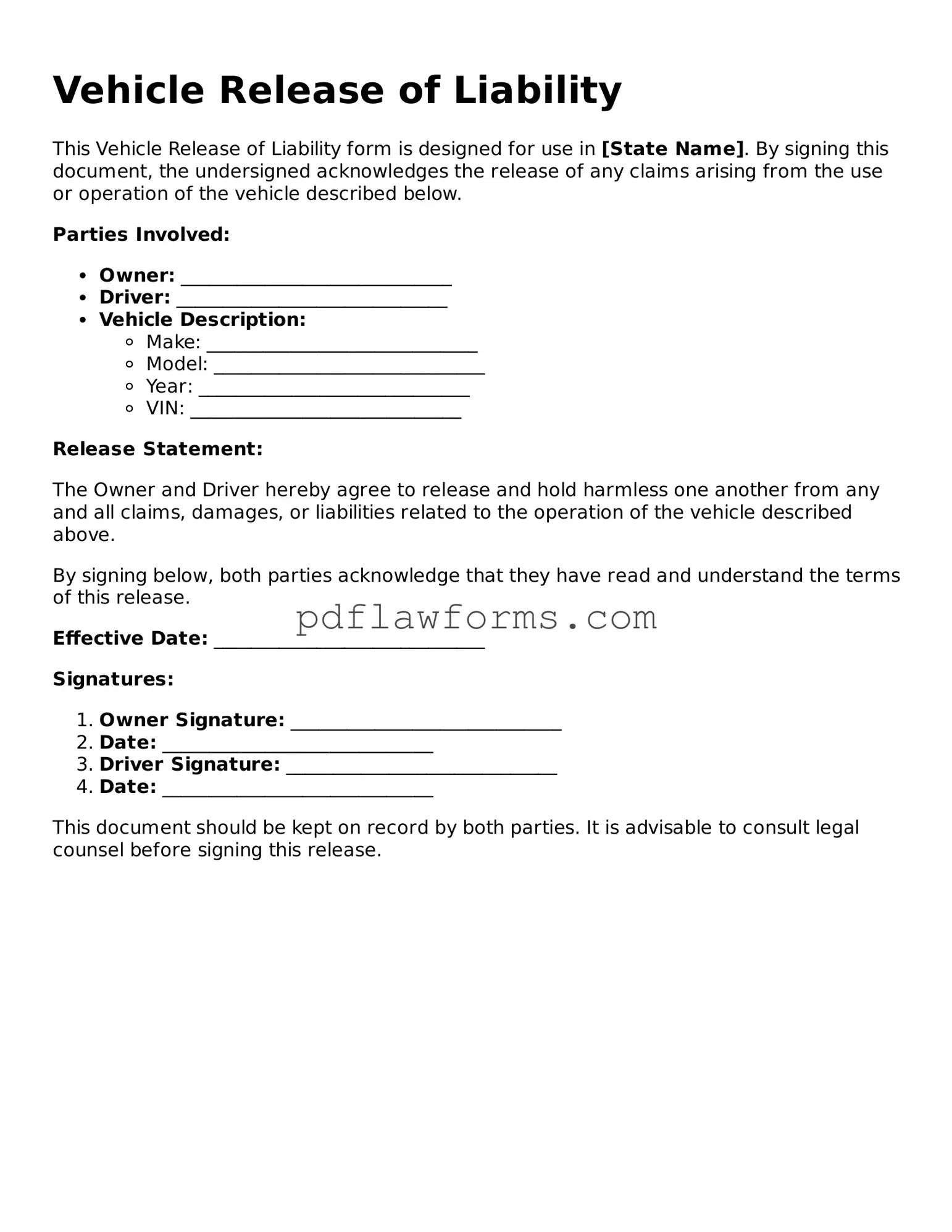Official Vehicle Release of Liability Form
The Vehicle Release of Liability form is a legal document designed to protect vehicle owners from potential claims or liabilities arising from the use of their vehicle by another party. By signing this form, individuals acknowledge the risks involved and agree to release the vehicle owner from any future legal responsibility. To ensure your interests are safeguarded, consider filling out the form by clicking the button below.
Make My Document Online
